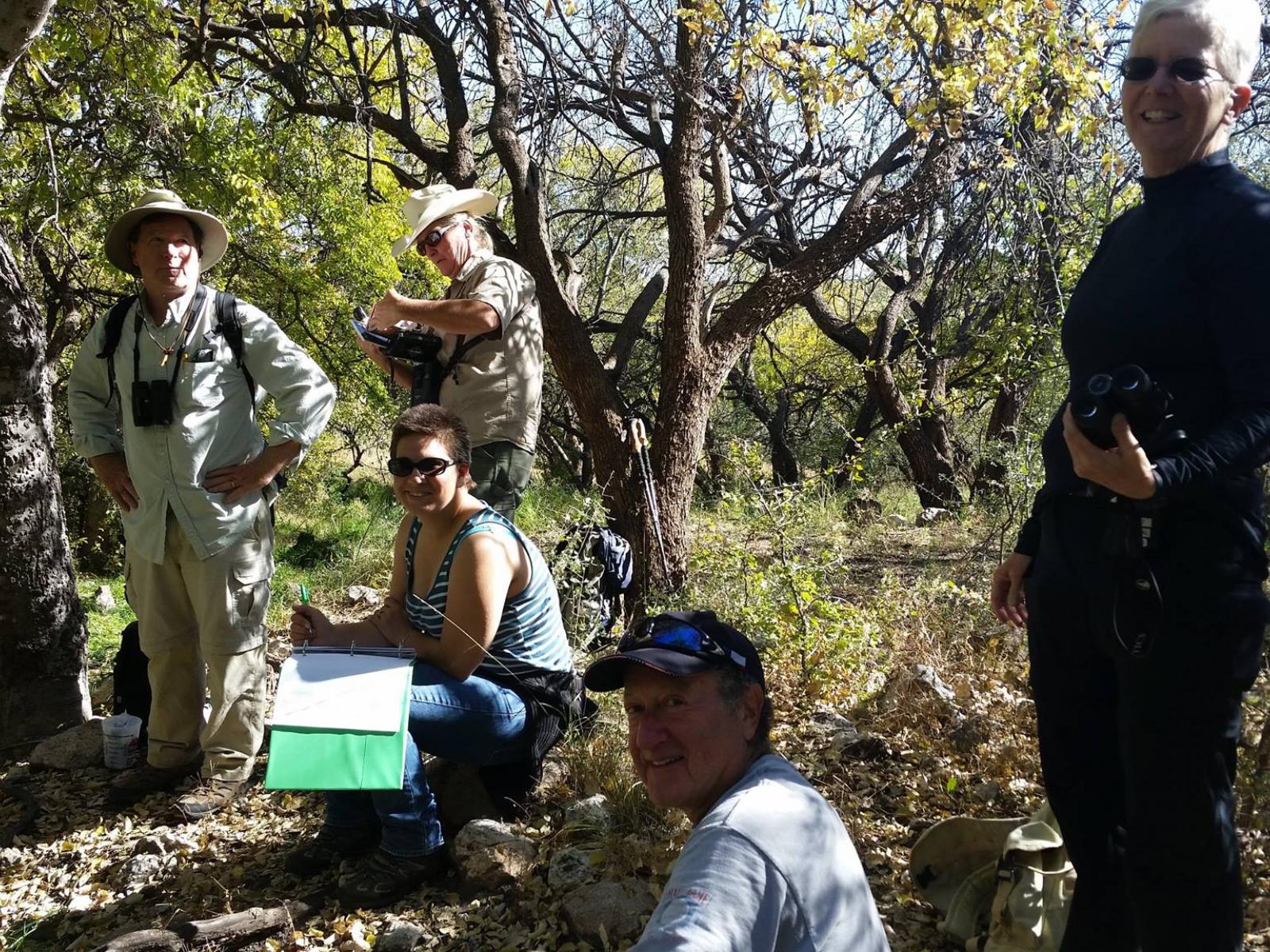An Overview Of Our Solution
No abstract.
- Population Impacted: 250,000
- Continent: North America
Address
300 E University Blvd Suite 270
Tucson, AZ 85705
Amerika Serikat
Hazard
Identify the likelihood and frequency of this hazard
Explain how vulnerable the community is to this hazard
List the potential affects of this hazard
Identify how sensitive the community is to these affects
Preparedness Goal
Implementation Actions
Our activities are designed to prevent catastrophic post-fire fall out including (but not limited to) hazardous flooding. We are working with land managers and restoration practitioners to anticipate the location and impacts of catastrophic fire and will install appropriate structures on the ground ahead of fire events to reduce risk and impact to wildlife and communities. For example, we apply novel, low-tech erosion control structures and replace destroyed vegetation. These actions increase resilience, so the natural habitat is not as intensely damaged during fires and also mitigate negative impacts of flooding. These complementary strategies reduce in-channel and sheet erosion (especially at the top of watersheds), increase water infiltration within the watershed, protect spring habitats from sedimentation, and restore food resources for wildlife and pollinators. Erosion control structures such as one-rock dams, increase soil moisture, slow debris and sediment flows, and provide microhabitats that not only aid in post-fire recovery, but provide protection from intense fire effects through increased soil moisture and vegetation cover. Our methods are already working in Sky Island watersheds to improve the nectar landscape, and increase moisture levels and water availability for wildlife. These affordable tools and strategies can be scaled to the landscape-level for widespread ecological benefit. We use low-cost and on-site materials and volunteer labor. To ensure long-term changes in management, the success of the project, and replicability we complement on-the-ground implementation with workshops and collaboration focused on advancing policies and management that support effective pre- and post-fire response in the region.
Describe Your Solution
none listed.
Economic?
Engaging the community in restoration activities and building funded restoration projects builds community investment in healthy ecosystems. Locally sourced restoration materials support local economies. Investment in pro-active climate change activities reduce the amount of money needed to be spent later in situations of disastrous ecosystem destruction due to fire, and destruction of infrastructure due to severe flooding. The Sky Island Region is an ecotourism destination that relies on intact ecosystems that support a diversity of species to draw visitors to the area to support local business. Our work is contributing to keeping those ecosystems and species intact.
Environmental?
Functioning watersheds and food-webs support pollinators and other wildlife in Sky Islands. New microhabitats exist and persist due to erosion control efforts and large areas are more resistant to intense fire. Through installation of low-tech restoration structures, water movement is slowed and more water is retained on the landscape – making it available for wildlife and human use. Reduced erosion also improves transportation safety for rural residence and recreational users of forest and other public lands.
Social?
Water resources are resilient and serve both human communities and natural ecosystems. Natural resource managers are now coordinating water resource management across jurisdictions. They now have increased information and capacity to coordinate landscape level fire planning, as well as post-fire restoration responses. All project activities are ultimately creating informed and trained agency personnel who will advance water resource conservation and landscape restoration efforts in the region. Through these projects, human communities are protected from devastating drought and post-fire flooding. Engaging the community in documenting, protecting and restoring these resources leads to long-term investment in their own health and safety.
What were the negative or unintended impacts (if any) associated with implementing this solution?
At any given spring site, many different options exist for supporting particular species, increased flow or ecosystem function. Sometimes one action taken to support a particular species may not be beneficial to other parts of the spring ecosystem. In planning and completing restoration work, we have discovered that it is critical to engage multiple stakeholders in the discussion about how to approach work at the site and to carefully think through potential positive and negative impacts of proposed actions.
Return on Investment: How much did it cost to implement these activities? How do your results above compare to this investment?
Project costs including climate change adaptation planning and on-the-ground implementation were grant funded and included approximately $300,000 over two years. We estimate the cost for full completion or pre and post fire watershed treatments will be $250,000 over two years. Because we are a non-profit organization that relies heavily on volunteer labor to collect data and conduct restoration, this cost is lower than would be expected if all labor was paid wages.
What are the main factors needed to successfully replicate this solution
Strong working partnerships with federal, state and local agencies and private citizens managing land. Querying managers and communities to understand their information needs and management objectives before constructing this project was key to its success. Continued coordination with partners throughout the project has also been key to its success. This type of coordination leads to changes in approaches to management as more creative energy is focused on identifying and solving management challenges associated with water scarcity and fire effects. Springs ecosystems have risen to the forefront of conversations in the region in relation to wildlife adaptation to climate change, watershed restoration efforts, management planning and other topics. Regional climate change adaptation planning was an important first step in identifying where and how to conduct on the ground projects to reduce community vulnerability. We greatly increased our efficacy and efficiency at assessing and restoring springs by training an enthusiastic and capable corps of volunteers. We trained over 150 volunteers. We continue to bring a regional perspective to decision making about the protection of sensitive water resources which was previously happening in very site-specific ways without consideration of the importance of a resource to the larger landscape.
